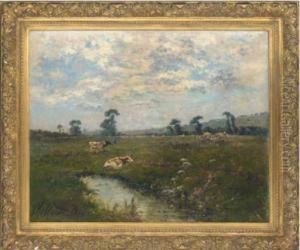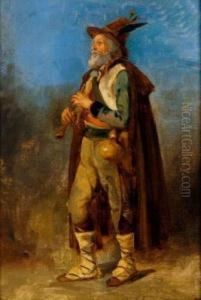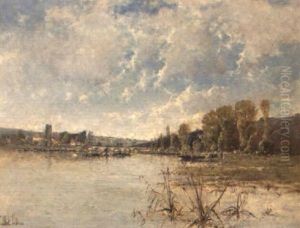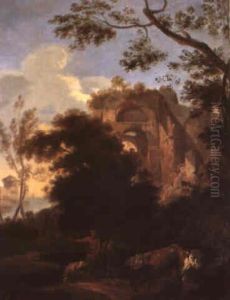Adolphe Etienne Viollet-Le-Duc Paintings
Adolphe Etienne Viollet-le-Duc was a French architect and theorist, famous for his interpretive restorations of medieval buildings. Born in Paris on January 27, 1814, to a wealthy and educated family, Viollet-le-Duc was raised in an environment that valued heritage and the arts. Despite not receiving formal training as an architect, he developed a profound interest in architecture, and especially medieval architecture, from an early age.
Viollet-le-Duc's approach to restoration was highly innovative for his time. He believed in restoring buildings to their complete forms, which often involved a combination of historical fidelity and creative addition. This philosophy was in sharp contrast with the then-prevailing approach of conservation, which emphasized maintaining the ruins as they were. Among his most famous restorations are those of Notre-Dame de Paris, the city wall of Carcassonne, Mont Saint-Michel, and the Basilica of Saint Denis.
Apart from his restoration work, Viollet-le-Duc is also well-remembered for his theoretical contributions to architecture. His multi-volume work 'Dictionnaire raisonné de l'architecture française du XIe au XVIe siècle' (Rational Dictionary of French Architecture from the 11th to the 16th Century) remains a seminal resource for understanding medieval architecture. His writings also influenced the Gothic Revival movement across Europe and the United States.
Throughout his career, Viollet-le-Duc faced criticism for his restoration methods, which some contemporaries and later historians felt misrepresented or altered the original intentions of the buildings' medieval creators. Despite these controversies, his work was profoundly influential, and his theories on architectural restoration continue to spark debate in conservation circles.
Viollet-le-Duc passed away on September 17, 1879, in Lausanne, Switzerland. His legacy persists in the many buildings he restored, which continue to be visited and admired by millions, and in the ongoing discussions about the philosophy and practice of architectural restoration and conservation.



